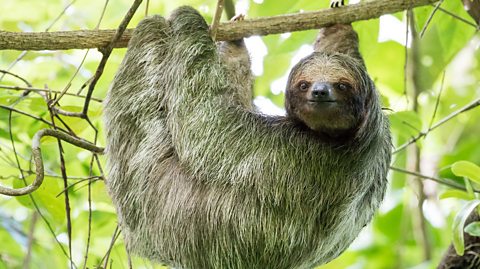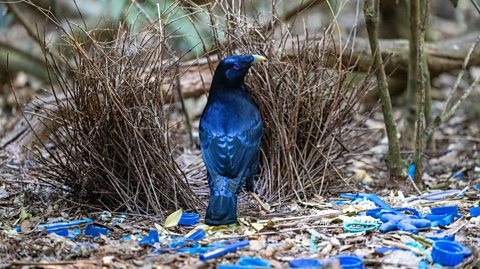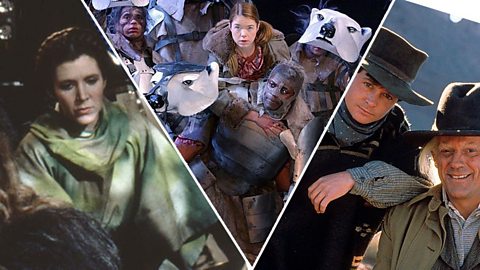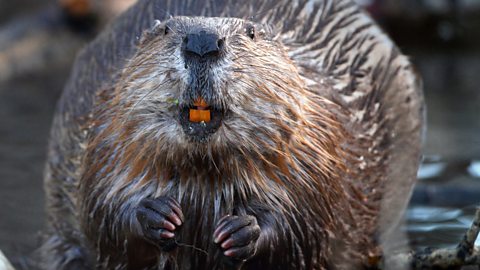The animal kingdom is full of wonder and oddity.
There are millions of different animal species across the world and each one has something special that separates it from the rest. But some animals are so extraordinary that theyтre almost unbelievable.
From the cute to the gross, to the downright surprising, ТщЖЙдМХФ Bitesize takes a look at four incredible wildlife facts.

1. Sloths can hold their breath longer than dolphins
Slower than any other mammal in the world, sloths are well-known for conserving their energy and taking life very slowly. But they also have a secret knack for swimming. Thatтs right, when swimming in water sloths can move up to three times faster than when walking on land. This is partially thanks to their diet of leaves, which produces large amounts of gas in their stomach, helping them to keep buoyant in water.
But the surprises donтt stop there. Sloths can also hold their breath underwater for as long as 40 minutes. It does this by depressing its already slow metabolism, resulting in its heart rate falling to less than a third of its normal rate.
In comparison, some aquatic mammals can only hold their breath for minutes at a time. For example, Atlantic Spotted Dolphins can dive up to 61m (200ft) and have been recorded holding their breath for up to ten minutes. Who wouldтve thought!
2. Caterpillars turn to goo before becoming butterflies
Most of us are aware of the basic life cycle of a butterfly. But the transformation from chrysalis to winged creature isnтt as straightforward as you might thinkтІ
While inside the chrysalis, the butterfly is in a development stage called a pupa. In order to complete its metamorphosis into a butterfly, the pupa begins to release enzymes that digest nearly all of its own body. From here, all that is left is a nutrient-rich goo, made up of a group of cells called imaginal discs.
One part of the pupa that doesnтt turn to goo is the brain. Some scientists believe that after the metamorphosis is finally completed, butterflies may have the capability to retain memories from the time they were a caterpillar.

3. Wombats have cubed-shaped poo
Believe it or not, bare-nosed wombats are the only known animal in the world to produce cube-shaped poo. Not only that, but they may even poop up to 100 cubes each day. The phenomenon confused scientists, who tried to discover why and how this is possible for years.
But in 2019 a team of Australian and US scientists shed some light on the matter. They found that the distinctive shape was down to a combination of the wombatтs intestines, which are ten times the length of the animalтs body, as well as muscular contractions. These factors help form the size and corners of the poo.
The wombats will then use the poo to mark their home range and place them in distinct locations, such as rocks, to communicate with one another.
Later that same year the study won the Ig Nobel Prize in physics тfor research that makes you laugh then thinkт.
4. Pigeons can see so well they have helped out in rescue missions
Pigeons have an incredibly wide field of vision - in fact, they can see for 320 degrees without turning their head. Not only that but they can also see ultraviolet light not visible to the human naked eye. Their sight is so advantageous that they have previously been used to assist search and rescue missions.
Between the 1970s and 1980s, the US Coast Guard trained pigeons to aid missions in an effort known as Project Sea Hunt. According to reports, when taken on helicopter rescue missions, pigeons were able to spot their targets 90% of the time. This was significantly higher than the rescue crew who were able to spot the target less than 40% of the time.
Scientists credited the birds' sensory and behavioural attributes for getting the job, which make them suited to scanning large areas faster than a human being.
This article was published in September 2023
Five fun behaviours we have in common with animals
Do animals share our creature comforts? Find out with these five fabulous animal facts.

The third in the trilogy quiz
How much do you know about Return of the Jedi, Back to the Future Part III - or even the Oedipus Cycle?

The amazing creatures that never stop growing
Discover how and why some plants and animals simply never stop growing, as long as their environment allows.
